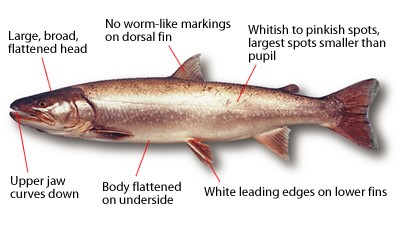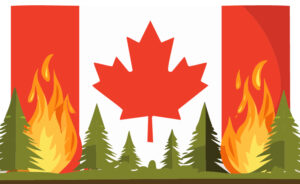 Fossil fuel pollution is overheating Canadian forests, spawning an out-of-control wildfire crisis. Wildfire is now incinerating four times more forest carbon than during the 1990s. …This accelerating new source of CO2 is adding to the already massive and growing emissions of CO2 caused by humans burning fossil oil, gas and coal. Canada’s continent-spanning forest is especially vulnerable to this rising heat. Its billions of trees, spread across hundreds of millions of hectares, are overheating at two to three times the global pace. …Let’s start with the 1990s. During that decade, wildfire emissions totalled 800 MtCO2. …Compare that to the most recent decade (2016-2025). Over these 10 years, wildfires released four times more carbon than they did during the nineties – a total of 3,200 MtCO2. …But wildfires also impact the climate system. And that climate impact unfolds over decades.
Fossil fuel pollution is overheating Canadian forests, spawning an out-of-control wildfire crisis. Wildfire is now incinerating four times more forest carbon than during the 1990s. …This accelerating new source of CO2 is adding to the already massive and growing emissions of CO2 caused by humans burning fossil oil, gas and coal. Canada’s continent-spanning forest is especially vulnerable to this rising heat. Its billions of trees, spread across hundreds of millions of hectares, are overheating at two to three times the global pace. …Let’s start with the 1990s. During that decade, wildfire emissions totalled 800 MtCO2. …Compare that to the most recent decade (2016-2025). Over these 10 years, wildfires released four times more carbon than they did during the nineties – a total of 3,200 MtCO2. …But wildfires also impact the climate system. And that climate impact unfolds over decades.
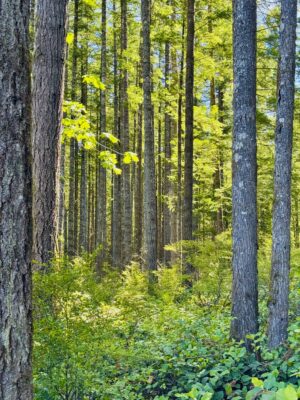 Artificial intelligence (AI), machine learning, remote piloting, and robotics are beginning to have a profound impact on the forest industry as we have known it, from forest management to log harvesting and delivery and right through to lumber production. This is only the beginning. In a recent interview, Bill Gates said that AI will have a more profound impact on humanity than the personal computer (PC) did. …From a forest management perspective, AI offers incredible potential for planning forest cutblocks and reforestation. In the face of climate change, forest companies will have no choice but to design forests that are more resilient to forest fires, pest and pathogens. The ability of AI to provide a variety of solutions in minutes, based on collating and analyzing past research, will make a forest technician’s job easier, while providing better solutions. This is a clear example of using AI for good—and we should make the most of it.
Artificial intelligence (AI), machine learning, remote piloting, and robotics are beginning to have a profound impact on the forest industry as we have known it, from forest management to log harvesting and delivery and right through to lumber production. This is only the beginning. In a recent interview, Bill Gates said that AI will have a more profound impact on humanity than the personal computer (PC) did. …From a forest management perspective, AI offers incredible potential for planning forest cutblocks and reforestation. In the face of climate change, forest companies will have no choice but to design forests that are more resilient to forest fires, pest and pathogens. The ability of AI to provide a variety of solutions in minutes, based on collating and analyzing past research, will make a forest technician’s job easier, while providing better solutions. This is a clear example of using AI for good—and we should make the most of it. The Government of Canada says it is just over a 10th of the way to its goal of planting two billion trees across the country. Launched in 2021, Canada’s 2 Billion Trees program has reached the milestone of 228 million trees planted, with agreements already in place to plant a total of nearly one billion within the coming years. As of June, 11 provinces and territories, 58 Indigenous partners, 30 municipalities and 88 non-governmental organizations has signed or are negotiating tree-planting agreements. The program aims to protect crucial wildlife habitat, restore areas impacted by wildfires and sequester carbon. …Some of these initiatives include creating at least 10 new national parks and marine conservation areas and 15 new urban parks, as well as designating 30 per cent Canada’s land and water as conservation areas by 2030. The federal government has also committed to reach an emissions reduction target of 40 per cent below 2005 levels by 2030 and net-zero emissions by 2050.
The Government of Canada says it is just over a 10th of the way to its goal of planting two billion trees across the country. Launched in 2021, Canada’s 2 Billion Trees program has reached the milestone of 228 million trees planted, with agreements already in place to plant a total of nearly one billion within the coming years. As of June, 11 provinces and territories, 58 Indigenous partners, 30 municipalities and 88 non-governmental organizations has signed or are negotiating tree-planting agreements. The program aims to protect crucial wildlife habitat, restore areas impacted by wildfires and sequester carbon. …Some of these initiatives include creating at least 10 new national parks and marine conservation areas and 15 new urban parks, as well as designating 30 per cent Canada’s land and water as conservation areas by 2030. The federal government has also committed to reach an emissions reduction target of 40 per cent below 2005 levels by 2030 and net-zero emissions by 2050.

 In this edition of our newsletter you’ll find these headlines and more:
In this edition of our newsletter you’ll find these headlines and more: Bikers should take note that end-of-summer logging operations are kicking into gear at Revelstoke’s Mount MacPherson for a month starting next week, but minimally impacting recreational trails, according to a local cycling group. In a Facebook post on Wednesday afternoon, Aug. 27, the Revelstoke Cycling Association (RCA) advised that forest harvesting begins at the mountain’s upper trail network on the weekdays following the Labour Day weekend. This comes one week later than previously indicated in RCA’s trail report. Logging will run from 3 a.m. to 5 p.m. weekdays through most or all of September, with no activity planned for weekends, according to the association.
Bikers should take note that end-of-summer logging operations are kicking into gear at Revelstoke’s Mount MacPherson for a month starting next week, but minimally impacting recreational trails, according to a local cycling group. In a Facebook post on Wednesday afternoon, Aug. 27, the Revelstoke Cycling Association (RCA) advised that forest harvesting begins at the mountain’s upper trail network on the weekdays following the Labour Day weekend. This comes one week later than previously indicated in RCA’s trail report. Logging will run from 3 a.m. to 5 p.m. weekdays through most or all of September, with no activity planned for weekends, according to the association.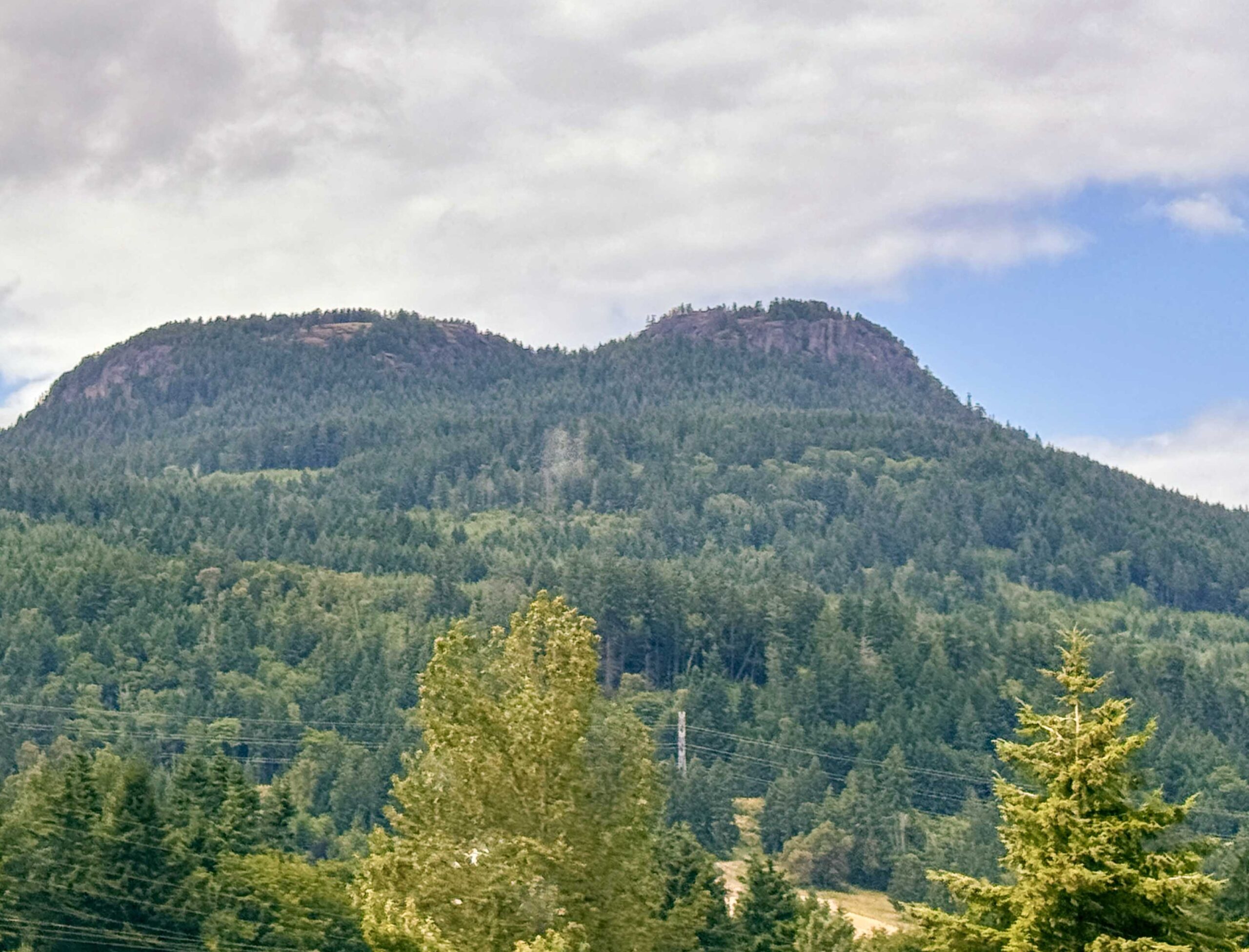 North Cowichan council has voted to make logging in the municipal forest reserve a strategic priority, despite warnings from some councillors and staff that the move could jeopardize years of work with the Quw’utsun Nation on a forest co-management framework. Timber harvesting in the roughly 5,000-hectare public forest has been on pause since 2019 to allow for public engagement, consultation with local First Nations and advice from experts on how to manage the publicly-owned woodland. Surveys found a majority of residents preferred conservation over harvesting — with 67 per cent of telephone respondents and 76 per cent of online respondents supporting either limiting timber harvesting … or not harvesting timber at all. In 2021, North Cowichan signed a memorandum of understanding with the Quw’utsun Nation… While it could take years before harvesting resumes, some around the council table warned that exploring harvesting options could negatively impact progress made towards a co-management framework with the Quw’utsun Nation.
North Cowichan council has voted to make logging in the municipal forest reserve a strategic priority, despite warnings from some councillors and staff that the move could jeopardize years of work with the Quw’utsun Nation on a forest co-management framework. Timber harvesting in the roughly 5,000-hectare public forest has been on pause since 2019 to allow for public engagement, consultation with local First Nations and advice from experts on how to manage the publicly-owned woodland. Surveys found a majority of residents preferred conservation over harvesting — with 67 per cent of telephone respondents and 76 per cent of online respondents supporting either limiting timber harvesting … or not harvesting timber at all. In 2021, North Cowichan signed a memorandum of understanding with the Quw’utsun Nation… While it could take years before harvesting resumes, some around the council table warned that exploring harvesting options could negatively impact progress made towards a co-management framework with the Quw’utsun Nation.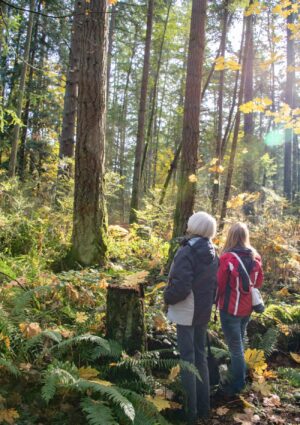 QUESNEL, BC — The Three Rivers Community Forest (TRCF) is showing how local control can bring fresh ideas to forest management, general manager Nick Pickles told Quesnel council this week. The area-based tenure, signed in October 2024, covers more than 38,000 hectares and is jointly owned by the City of Quesnel and the Esdilagh, Lhtako Dene, and Nazko First Nations. It comes with an allowable annual harvest of about 43,000 cubic-metres of conifer and another 10,500 cubic-metres of deciduous timber, Pickles explained at council’s Aug. 26 meeting. …Pickles said the TRCF mandate is more than just cutting trees. “It’s designed to provide long-term access to forest resources for community benefit. It focuses on local decision-making, stewardship, and sustainable forest use.” Profits are reinvested locally, whether it’s jobs, education, or infrastructure, Pickles added.
QUESNEL, BC — The Three Rivers Community Forest (TRCF) is showing how local control can bring fresh ideas to forest management, general manager Nick Pickles told Quesnel council this week. The area-based tenure, signed in October 2024, covers more than 38,000 hectares and is jointly owned by the City of Quesnel and the Esdilagh, Lhtako Dene, and Nazko First Nations. It comes with an allowable annual harvest of about 43,000 cubic-metres of conifer and another 10,500 cubic-metres of deciduous timber, Pickles explained at council’s Aug. 26 meeting. …Pickles said the TRCF mandate is more than just cutting trees. “It’s designed to provide long-term access to forest resources for community benefit. It focuses on local decision-making, stewardship, and sustainable forest use.” Profits are reinvested locally, whether it’s jobs, education, or infrastructure, Pickles added.
 A reader wrote The Discourse recently with a question about why the BC Wildfire Service protects privately-owned forest land on Vancouver Island. It was an interesting question, but it hinted at a bigger one: What are forestry companies doing to prevent and mitigate wildfires from happening in the first place? Recent major wildfires on Vancouver Island have been on a mix of Crown land and private land owned by or under license of forestry companies. This includes the fire from early this week on Block 290 near Mount Benson that was recently transferred to Snuneymuxw First Nation. A recent special investigation by the BC Forest Practices Board on
A reader wrote The Discourse recently with a question about why the BC Wildfire Service protects privately-owned forest land on Vancouver Island. It was an interesting question, but it hinted at a bigger one: What are forestry companies doing to prevent and mitigate wildfires from happening in the first place? Recent major wildfires on Vancouver Island have been on a mix of Crown land and private land owned by or under license of forestry companies. This includes the fire from early this week on Block 290 near Mount Benson that was recently transferred to Snuneymuxw First Nation. A recent special investigation by the BC Forest Practices Board on 
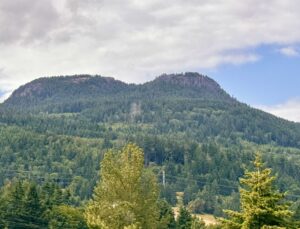 Harvesting in North Cowichan’s 5,000-hectare municipal forest reserve (MFR) is considered a primary issue for the rest of council’s term, which ends in October, 2026. On Aug. 20, council voted 4-3 to make harvesting, which hasn’t taken place since 2019, one of its strategic priorities. Coun. Bruce Findlay pointed out that the municipality has received no revenues from harvesting in the MFR for six years, and it may take several more years yet as negotiations with the Quw’utsun Nation on co-management of the MFR continue. …Despite the vote, CAO Ted Swabey advised council that he thinks that it’s unlikely that any harvesting could actually take place before the end of council’s term. …The public engagement aspect of the forest review concluded in early 2023, and the feedback from that process found very strong support for active conservation in the MFR, which would allow for targeted harvesting to provide some income, while restoring and enhancing biodiversity.
Harvesting in North Cowichan’s 5,000-hectare municipal forest reserve (MFR) is considered a primary issue for the rest of council’s term, which ends in October, 2026. On Aug. 20, council voted 4-3 to make harvesting, which hasn’t taken place since 2019, one of its strategic priorities. Coun. Bruce Findlay pointed out that the municipality has received no revenues from harvesting in the MFR for six years, and it may take several more years yet as negotiations with the Quw’utsun Nation on co-management of the MFR continue. …Despite the vote, CAO Ted Swabey advised council that he thinks that it’s unlikely that any harvesting could actually take place before the end of council’s term. …The public engagement aspect of the forest review concluded in early 2023, and the feedback from that process found very strong support for active conservation in the MFR, which would allow for targeted harvesting to provide some income, while restoring and enhancing biodiversity.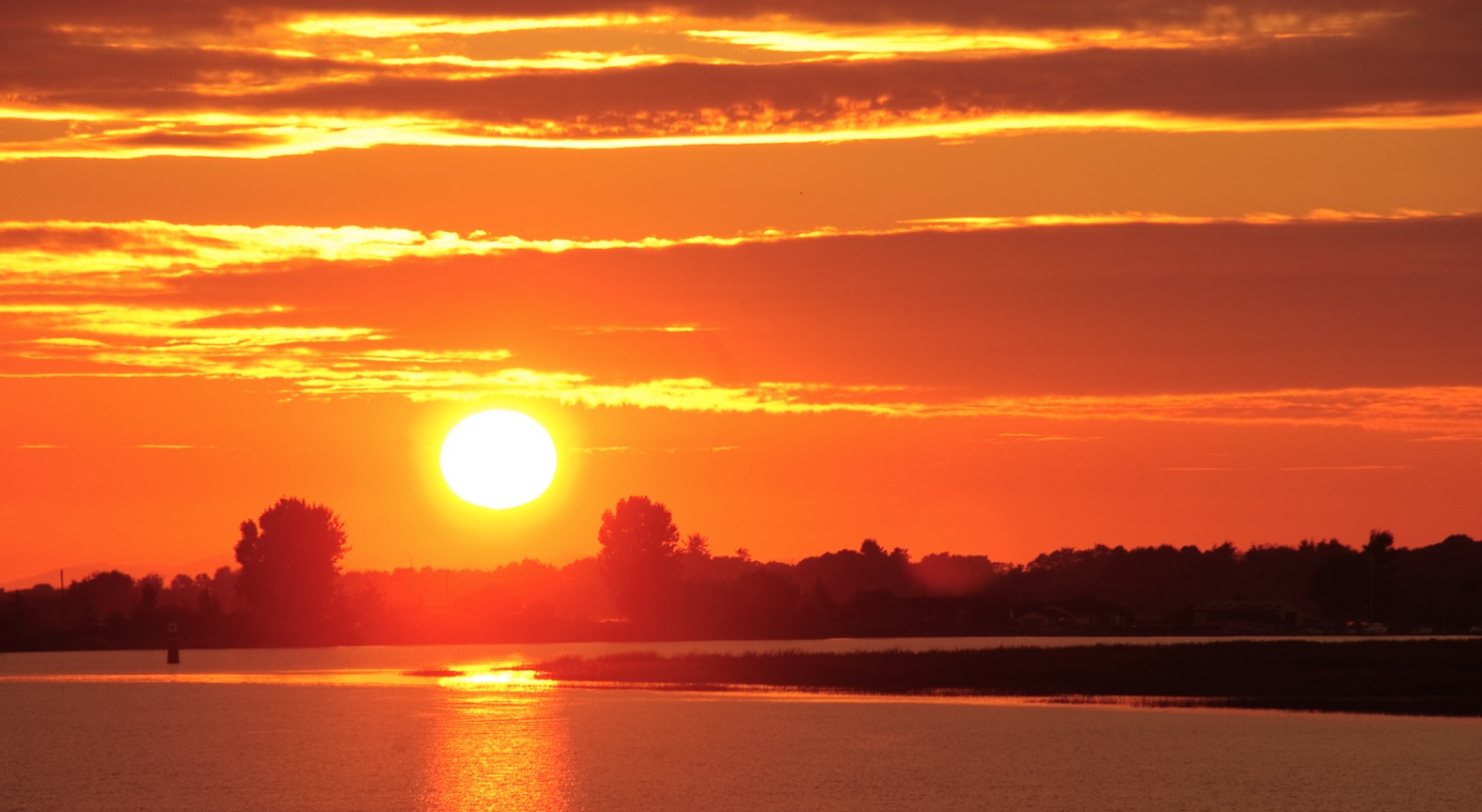 On the heels of record-breaking daily high temperatures, Vancouver Islanders face warmer than usual weather this week. Temperatures will continue to “remain well above seasonal” into mid-week for east and inland Vancouver Island with cooler temperatures overnight, according to an Environment Canada statement issued early Aug. 26. The extra warm conditions are expected to persist from inland Greater Victoria, up the east coast from Nanoose Bay to Fanny Bay. Cloud cover is expected Thursday. The Malahat area broke the newest record on the Island, hitting 30.2 C, topping the 29.8 daily record set in 2022. Nanaimo tied the oldest record, hitting a high of 33.3 set in 1958. Campbell River, Courtenay and Comox all flirted with 2016 records, with Campbell River shading the old 30 C temperature, hitting 30.2. Comox and Courtenay both tied the 2016 record of 30.3. The heat coincided with a new wildfire discovered Aug. 24 south of Nanaimo. The 8.6-hectare fire was classified as being held as of Tuesday morning.
On the heels of record-breaking daily high temperatures, Vancouver Islanders face warmer than usual weather this week. Temperatures will continue to “remain well above seasonal” into mid-week for east and inland Vancouver Island with cooler temperatures overnight, according to an Environment Canada statement issued early Aug. 26. The extra warm conditions are expected to persist from inland Greater Victoria, up the east coast from Nanoose Bay to Fanny Bay. Cloud cover is expected Thursday. The Malahat area broke the newest record on the Island, hitting 30.2 C, topping the 29.8 daily record set in 2022. Nanaimo tied the oldest record, hitting a high of 33.3 set in 1958. Campbell River, Courtenay and Comox all flirted with 2016 records, with Campbell River shading the old 30 C temperature, hitting 30.2. Comox and Courtenay both tied the 2016 record of 30.3. The heat coincided with a new wildfire discovered Aug. 24 south of Nanaimo. The 8.6-hectare fire was classified as being held as of Tuesday morning. An international research project in the northern is taking a hard look at the decline of keynote bat populations in a bid to help area ecosystems survive and thrive. Efforts to preserve a population of northern myotis – an endangered bat species that used to be found throughout eastern B.C., but whose range has been contracting to the central Interior – are under way near Kinbasket Lake, north of Revelstoke and Golden. Researchers with the Wildlife Conservation Society … are planting fake bark to mimic the old-growth trees where the northern myotis roosts, and on the north side they are using radio detectors to determine how many of the bats are present in logged areas. Logging may not be an automatic death sentence to bat populations, Lausen says, but it needs to stay within the limits of what northern myotis colonies can sustain. One of the project’s goals is to identify those limits.
An international research project in the northern is taking a hard look at the decline of keynote bat populations in a bid to help area ecosystems survive and thrive. Efforts to preserve a population of northern myotis – an endangered bat species that used to be found throughout eastern B.C., but whose range has been contracting to the central Interior – are under way near Kinbasket Lake, north of Revelstoke and Golden. Researchers with the Wildlife Conservation Society … are planting fake bark to mimic the old-growth trees where the northern myotis roosts, and on the north side they are using radio detectors to determine how many of the bats are present in logged areas. Logging may not be an automatic death sentence to bat populations, Lausen says, but it needs to stay within the limits of what northern myotis colonies can sustain. One of the project’s goals is to identify those limits.
 Air quality warnings are becoming a feature of Ontario summers, but for most, the source has felt far away. As southern Ontarians stayed indoors … under air quality warnings this summer, fires closer to home ignited. In July and August, the province experienced a number of wildfires in places including the Kawarthas, a couple hours northeast of Toronto, and near the town of Huntsville, in the cottage country region of Muskoka. Farther north, First Nations communities like the Pikangikum First Nation and North Spirit Lake First Nation were evacuated due to wildfires and smoke… How do wildfires in southern Ontario stack up to the massive fires farther north, and what can be done? Here’s what you need to know. …fires in southern Ontario are different for two main reasons: the forest type and the many, many people here.
Air quality warnings are becoming a feature of Ontario summers, but for most, the source has felt far away. As southern Ontarians stayed indoors … under air quality warnings this summer, fires closer to home ignited. In July and August, the province experienced a number of wildfires in places including the Kawarthas, a couple hours northeast of Toronto, and near the town of Huntsville, in the cottage country region of Muskoka. Farther north, First Nations communities like the Pikangikum First Nation and North Spirit Lake First Nation were evacuated due to wildfires and smoke… How do wildfires in southern Ontario stack up to the massive fires farther north, and what can be done? Here’s what you need to know. …fires in southern Ontario are different for two main reasons: the forest type and the many, many people here.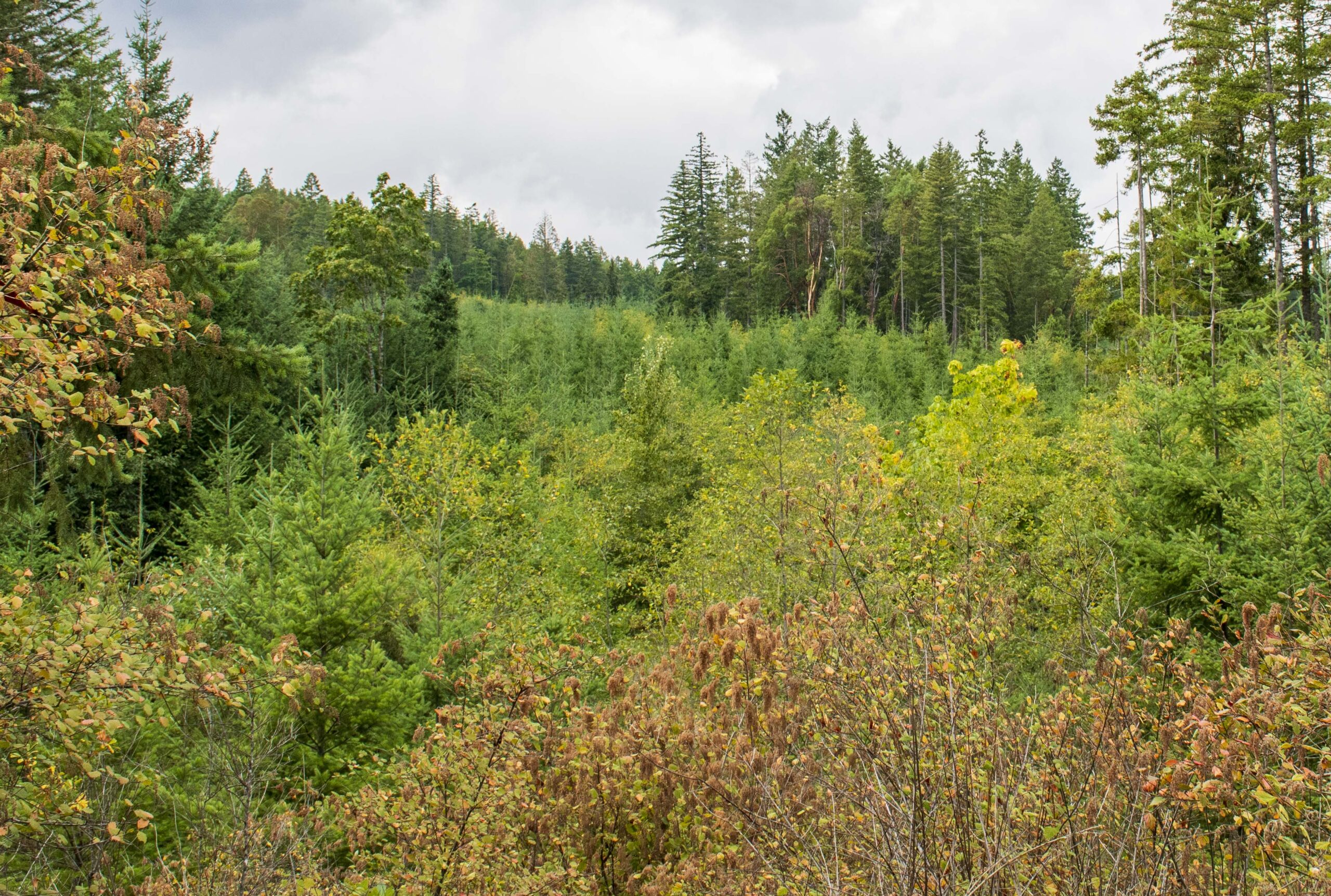 Activists are pushing for more information about where aerial spraying of glyphosate is happening after the Nova Scotia government has stopped releasing the locations for spraying of the herbicide by forestry companies. However the forestry sector says the use of the herbicide gets unfair attention, and identifying the locations draws protesters who block access to woodlots. Glyphosate is used by some woodlot owners to …reduce competition for more profitable softwood species… Previously, the provincial government provided premises identification (PID) numbers for where aerial sprays were approved. That didn’t happen when four approvals for spraying were issued in August. “We don’t have to tell everyone where these PIDs are, because it attracts people who don’t know the full story about forest management to show up roadblock your private woodlot, and prevent you from managing it as you see fit,” said Todd Burgess, executive director of Forest Nova Scotia.
Activists are pushing for more information about where aerial spraying of glyphosate is happening after the Nova Scotia government has stopped releasing the locations for spraying of the herbicide by forestry companies. However the forestry sector says the use of the herbicide gets unfair attention, and identifying the locations draws protesters who block access to woodlots. Glyphosate is used by some woodlot owners to …reduce competition for more profitable softwood species… Previously, the provincial government provided premises identification (PID) numbers for where aerial sprays were approved. That didn’t happen when four approvals for spraying were issued in August. “We don’t have to tell everyone where these PIDs are, because it attracts people who don’t know the full story about forest management to show up roadblock your private woodlot, and prevent you from managing it as you see fit,” said Todd Burgess, executive director of Forest Nova Scotia. 


 Under the 2001 Roadless Rule enacted by President Bill Clinton, millions of acres of roadless areas on national forests across the country are conserved, protecting vital habitats and watersheds. A “blank spot on a map,” in the words of the naturalist Aldo Leopold, is increasingly valuable in our urbanizing society. …The current administration is right to look for ways to address the growing wildfire threat in these areas. But instead of doing away with the Roadless Rule, the White House should look to a simple way to make our forests more resilient to wildfire without compromising the other benefits. …One way to allow forest thinning and prescribed burns to reduce the wildfire threat is to amend the roadless rule… to permit temporary roads in roadless areas that are near neighborhoods along the wildland-urban interface to allow for forest thinning or other ecological restoration. [to access the full story a NY Times subscription is required]
Under the 2001 Roadless Rule enacted by President Bill Clinton, millions of acres of roadless areas on national forests across the country are conserved, protecting vital habitats and watersheds. A “blank spot on a map,” in the words of the naturalist Aldo Leopold, is increasingly valuable in our urbanizing society. …The current administration is right to look for ways to address the growing wildfire threat in these areas. But instead of doing away with the Roadless Rule, the White House should look to a simple way to make our forests more resilient to wildfire without compromising the other benefits. …One way to allow forest thinning and prescribed burns to reduce the wildfire threat is to amend the roadless rule… to permit temporary roads in roadless areas that are near neighborhoods along the wildland-urban interface to allow for forest thinning or other ecological restoration. [to access the full story a NY Times subscription is required]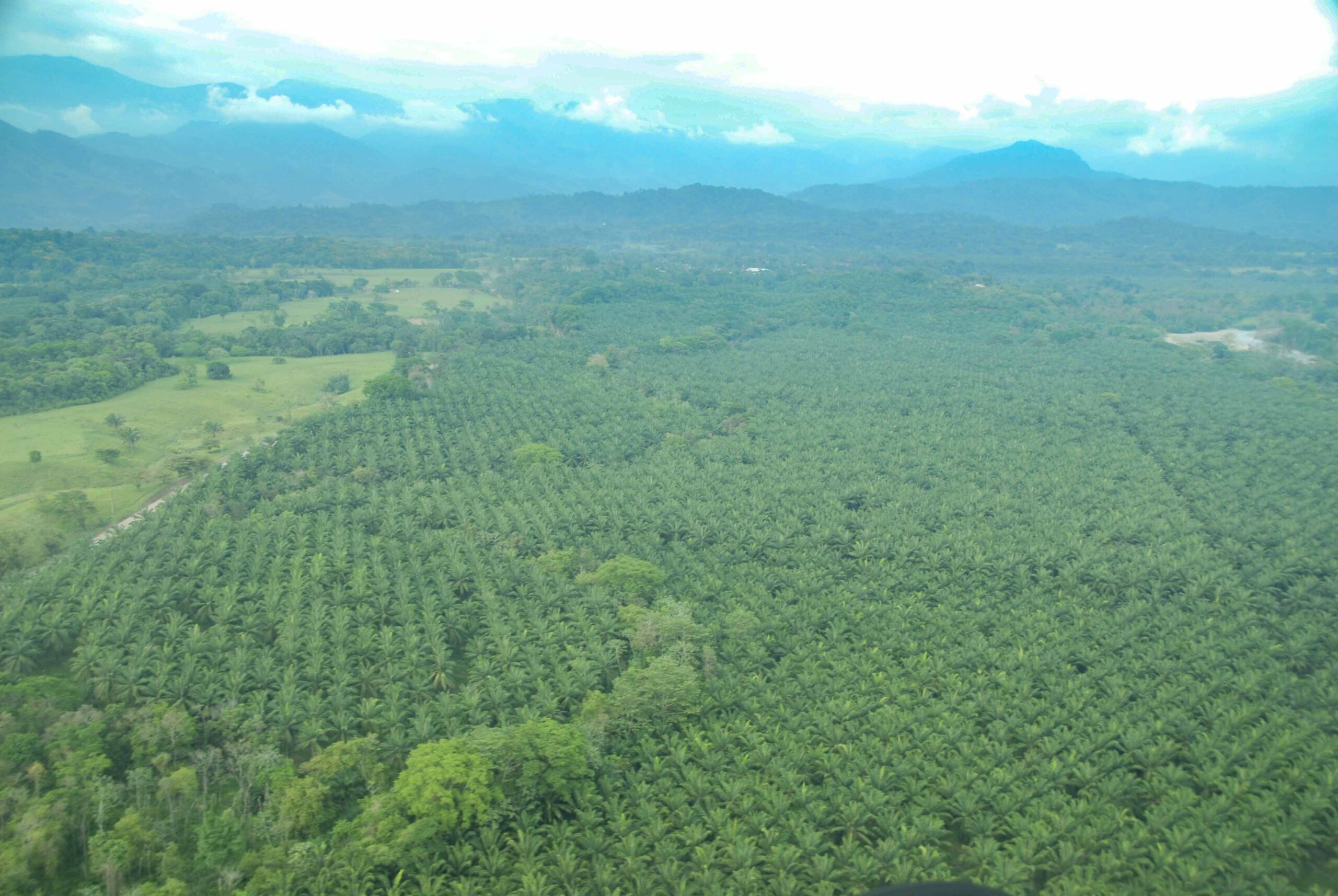
 Industry concerns have been raised over a freshly-struck agreement between the EU and the US over future trading arrangements, which observers have asserted could lead to America being offered exceptions from complying with EUDR environmental laws, reports Neill Barston. As the Palm Oil Monitor non-governmental organisation noted, if America is to be permitted exemptions from data monitoring underpinning the entire basis of the much-anticipated deforestation laws following intense lobbying from its paper industry, then other trading partners including Malaysia and Indonesia – which have core interests in the supply of palm oils for the confectionery and snacks sector, should be allowed similar treatment. …Moreover, as the palm oil industry organisation stated, unveiling the broader US-EU Trade Framework Agreement presents an immediate major hurdle for the EU Commission. In seemingly offering preferential treatment for America, this could, in its view, lead to challenges from the World Trade Organisation over equal trading between nationalities.
Industry concerns have been raised over a freshly-struck agreement between the EU and the US over future trading arrangements, which observers have asserted could lead to America being offered exceptions from complying with EUDR environmental laws, reports Neill Barston. As the Palm Oil Monitor non-governmental organisation noted, if America is to be permitted exemptions from data monitoring underpinning the entire basis of the much-anticipated deforestation laws following intense lobbying from its paper industry, then other trading partners including Malaysia and Indonesia – which have core interests in the supply of palm oils for the confectionery and snacks sector, should be allowed similar treatment. …Moreover, as the palm oil industry organisation stated, unveiling the broader US-EU Trade Framework Agreement presents an immediate major hurdle for the EU Commission. In seemingly offering preferential treatment for America, this could, in its view, lead to challenges from the World Trade Organisation over equal trading between nationalities.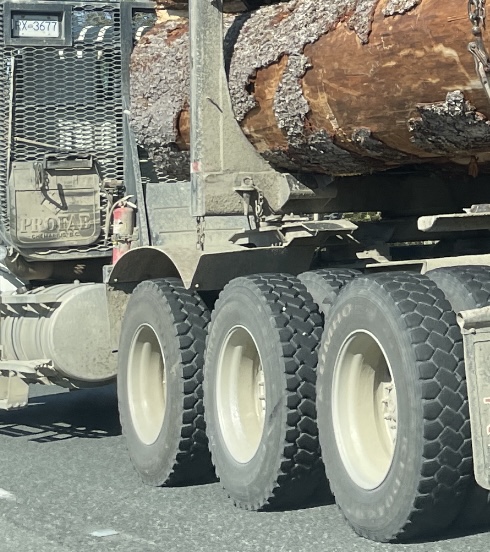 Colorado’s state-specific rule for largely protecting roadless areas in its national forests will be spared from a Trump administration effort to remove such protections on a broader basis. Agriculture Secretary Brooke Rollins said in a news release on Wednesday that a public comment period is opening on her previously announced proposal to do away with the 2001 national roadless rule. But the Agriculture Department also said in the news release that state-specific rules in Colorado and Idaho won’t be affected by the proposal. Altogether, the proposal would apply to nearly 45 million acres, the release said. Eliminating the rule would open roadless areas to road-building. The existing rule has limited activities such as logging in those areas, and was instituted at the end of the Clinton administration.
Colorado’s state-specific rule for largely protecting roadless areas in its national forests will be spared from a Trump administration effort to remove such protections on a broader basis. Agriculture Secretary Brooke Rollins said in a news release on Wednesday that a public comment period is opening on her previously announced proposal to do away with the 2001 national roadless rule. But the Agriculture Department also said in the news release that state-specific rules in Colorado and Idaho won’t be affected by the proposal. Altogether, the proposal would apply to nearly 45 million acres, the release said. Eliminating the rule would open roadless areas to road-building. The existing rule has limited activities such as logging in those areas, and was instituted at the end of the Clinton administration.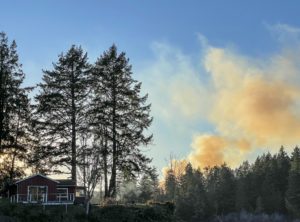 A year after Oregon endures its most destructive fire season on record in 2020, state lawmakers order a map estimating the wildfire risk for every property in the state. It’s the kind of rating now available on real estate sites like Zillow. The state wants to use the results to decide where it will apply forthcoming codes for fire-resistant construction and protections around homes. Around the same time, insurance companies start dropping Oregon homeowners’ policies and raising premiums to limit future losses, much as they have done in other disaster-prone states. Insurers have their own sophisticated risk maps to guide them, but some brokers instead tell homeowners the blame lies with the map. The belief gets treated as fact both on social media and in mainstream news — even though insurers and regulators say it’s not true. …By the time the state pulls back the map, the myths about it have gained so much momentum there’s no stopping them.
A year after Oregon endures its most destructive fire season on record in 2020, state lawmakers order a map estimating the wildfire risk for every property in the state. It’s the kind of rating now available on real estate sites like Zillow. The state wants to use the results to decide where it will apply forthcoming codes for fire-resistant construction and protections around homes. Around the same time, insurance companies start dropping Oregon homeowners’ policies and raising premiums to limit future losses, much as they have done in other disaster-prone states. Insurers have their own sophisticated risk maps to guide them, but some brokers instead tell homeowners the blame lies with the map. The belief gets treated as fact both on social media and in mainstream news — even though insurers and regulators say it’s not true. …By the time the state pulls back the map, the myths about it have gained so much momentum there’s no stopping them. 
 For a small but growing number of Oregon forestland buyers, timber output is no more than a potential byproduct. Their purchases are driven less by a desire for logs than for clean, drinkable water. …city governments have long drawn their drinking water from surrounding forests, but experts say more are now actually buying the tracts encompassing those crucial streams and rivers. …The prospect of hotter, drier weather diminishing summer stream flows — even as populations keep growing — is spurring cities to assert more control over their water supplies, experts say. …Apart from water quality considerations, cities are buying forested watersheds to encourage old growth characteristics, with the intent of actually boosting water supplies over the long term, experts say. …Though municipal ownership of forest watersheds is intended to pre-empt disputes between cities and timber operators, the arrangement can still lead to tension over management decisions.
For a small but growing number of Oregon forestland buyers, timber output is no more than a potential byproduct. Their purchases are driven less by a desire for logs than for clean, drinkable water. …city governments have long drawn their drinking water from surrounding forests, but experts say more are now actually buying the tracts encompassing those crucial streams and rivers. …The prospect of hotter, drier weather diminishing summer stream flows — even as populations keep growing — is spurring cities to assert more control over their water supplies, experts say. …Apart from water quality considerations, cities are buying forested watersheds to encourage old growth characteristics, with the intent of actually boosting water supplies over the long term, experts say. …Though municipal ownership of forest watersheds is intended to pre-empt disputes between cities and timber operators, the arrangement can still lead to tension over management decisions.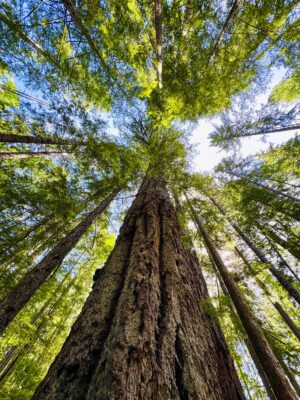 An executive order by Washington Commissioner of Public Lands Dave Upthegrove has put 77,000 acres of older forests off-limits to logging. …Some local activists call these old-but-not-quite-old-growth stands “legacy forests,” and have resorted to protests, including tree sits and road blockades, to stop them from being sawed down. Upthegrove’s order would also allow logging to go forward on 29,000 acres of those almost-old-growth forests. Some environmental groups praised the move, while others say it greenlights too much logging of the best remaining older forests. …Forest activists still hope to save some of areas slated to be logged over the next five years. …State officials say that timber harvest levels — and the revenue that goes to schools and counties — would be largely unaffected by the executive order. …The Department of Natural Resources has 346,000 acres of structurally complex forests on the 2.4 million acres of forestland it manages.
An executive order by Washington Commissioner of Public Lands Dave Upthegrove has put 77,000 acres of older forests off-limits to logging. …Some local activists call these old-but-not-quite-old-growth stands “legacy forests,” and have resorted to protests, including tree sits and road blockades, to stop them from being sawed down. Upthegrove’s order would also allow logging to go forward on 29,000 acres of those almost-old-growth forests. Some environmental groups praised the move, while others say it greenlights too much logging of the best remaining older forests. …Forest activists still hope to save some of areas slated to be logged over the next five years. …State officials say that timber harvest levels — and the revenue that goes to schools and counties — would be largely unaffected by the executive order. …The Department of Natural Resources has 346,000 acres of structurally complex forests on the 2.4 million acres of forestland it manages.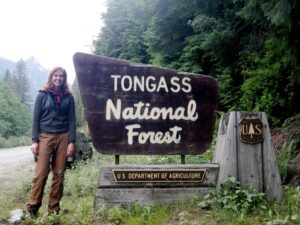 Ten members of the US House of Representatives’ Committee on Natural Resources are making an unusual visit to Alaska this week during a break from business on Capitol Hill. The 45-person committee deals with a variety of issues pertaining to public lands in the United States, and the visit is giving eight Republicans and two Democrats a chance to put their literal hands on the topics they cover. …Among the group was the committee’s chairman, Rep. Bruce Westerman, R-Arkansas, as well as the home-state Republican Rep. Nick Begich. Also attending were Reps. Harriet Hageman, R-Wyoming; Tom Tiffany, R-Wisconsin; Pete Stauber, R-Minnesota; Rob Wittman, R-Virginia; Val Hoyle, D-Oregon; Paul Gosar, R-Arizona; and Sarah Elfreth, D-Maryland. …Several of the Republican lawmakers said they believe there is room to increase logging in the Tongass in order to meet the demand for lumber to build housing, particularly locally.
Ten members of the US House of Representatives’ Committee on Natural Resources are making an unusual visit to Alaska this week during a break from business on Capitol Hill. The 45-person committee deals with a variety of issues pertaining to public lands in the United States, and the visit is giving eight Republicans and two Democrats a chance to put their literal hands on the topics they cover. …Among the group was the committee’s chairman, Rep. Bruce Westerman, R-Arkansas, as well as the home-state Republican Rep. Nick Begich. Also attending were Reps. Harriet Hageman, R-Wyoming; Tom Tiffany, R-Wisconsin; Pete Stauber, R-Minnesota; Rob Wittman, R-Virginia; Val Hoyle, D-Oregon; Paul Gosar, R-Arizona; and Sarah Elfreth, D-Maryland. …Several of the Republican lawmakers said they believe there is room to increase logging in the Tongass in order to meet the demand for lumber to build housing, particularly locally.

 The Northwest Forest Plan (NWFP) was developed in 1994 for the 24 million acres of federal land within the range of the northern spotted owl… A network of large reserves for the spotted owl across its range (late successional reserves (LSRs)) were created in the NWFP along with a system of riparian buffers to protect streamside areas. …The Forest Service is currently updating the NWFP and chartered a committee under the Federal Advisory Committee Act to help advise on amending the plan. …We strongly endorse this proposal for widespread restoration treatments in dry forests inside and outside of the LSRs. Reducing stand densities in these forests while retaining all trees over 150 years of age is essential to owl survival, as is reintroduction of fire as a regular management tool. …Integrating forest restoration in dry forests with spotted owl conservation is one of the biggest challenges in updating the NWFP.
The Northwest Forest Plan (NWFP) was developed in 1994 for the 24 million acres of federal land within the range of the northern spotted owl… A network of large reserves for the spotted owl across its range (late successional reserves (LSRs)) were created in the NWFP along with a system of riparian buffers to protect streamside areas. …The Forest Service is currently updating the NWFP and chartered a committee under the Federal Advisory Committee Act to help advise on amending the plan. …We strongly endorse this proposal for widespread restoration treatments in dry forests inside and outside of the LSRs. Reducing stand densities in these forests while retaining all trees over 150 years of age is essential to owl survival, as is reintroduction of fire as a regular management tool. …Integrating forest restoration in dry forests with spotted owl conservation is one of the biggest challenges in updating the NWFP.

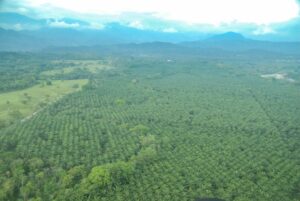 The Amazon rainforest is one of Earth’s most diverse ecosystems, playing a key role in maintaining regional and global climate stability. However, recent changes in land use, vegetation, and the climate have disrupted biosphere-atmosphere interactions, leading to significant alterations in the water, energy, and carbon cycles. …Here, we quantify the relative contributions of deforestation and global climate change to observed shifts in key Amazonian climate parameters. We analyzed long-term atmospheric and land cover change data across 29 areas in the Brazilian Legal Amazon from 1985 to 2020. …While the rise in atmospheric methane (CH4) and carbon dioxide (CO2) mixing ratios is primarily driven by global emissions, deforestation has significantly increased surface air temperatures and reduced precipitation during the Amazonian dry season. Over the past 35 years, deforestation has accounted for approximately 74% of the ~ 21 mm dry season decline and 16.5% of the 2°C rise in maximum surface air temperature.
The Amazon rainforest is one of Earth’s most diverse ecosystems, playing a key role in maintaining regional and global climate stability. However, recent changes in land use, vegetation, and the climate have disrupted biosphere-atmosphere interactions, leading to significant alterations in the water, energy, and carbon cycles. …Here, we quantify the relative contributions of deforestation and global climate change to observed shifts in key Amazonian climate parameters. We analyzed long-term atmospheric and land cover change data across 29 areas in the Brazilian Legal Amazon from 1985 to 2020. …While the rise in atmospheric methane (CH4) and carbon dioxide (CO2) mixing ratios is primarily driven by global emissions, deforestation has significantly increased surface air temperatures and reduced precipitation during the Amazonian dry season. Over the past 35 years, deforestation has accounted for approximately 74% of the ~ 21 mm dry season decline and 16.5% of the 2°C rise in maximum surface air temperature. 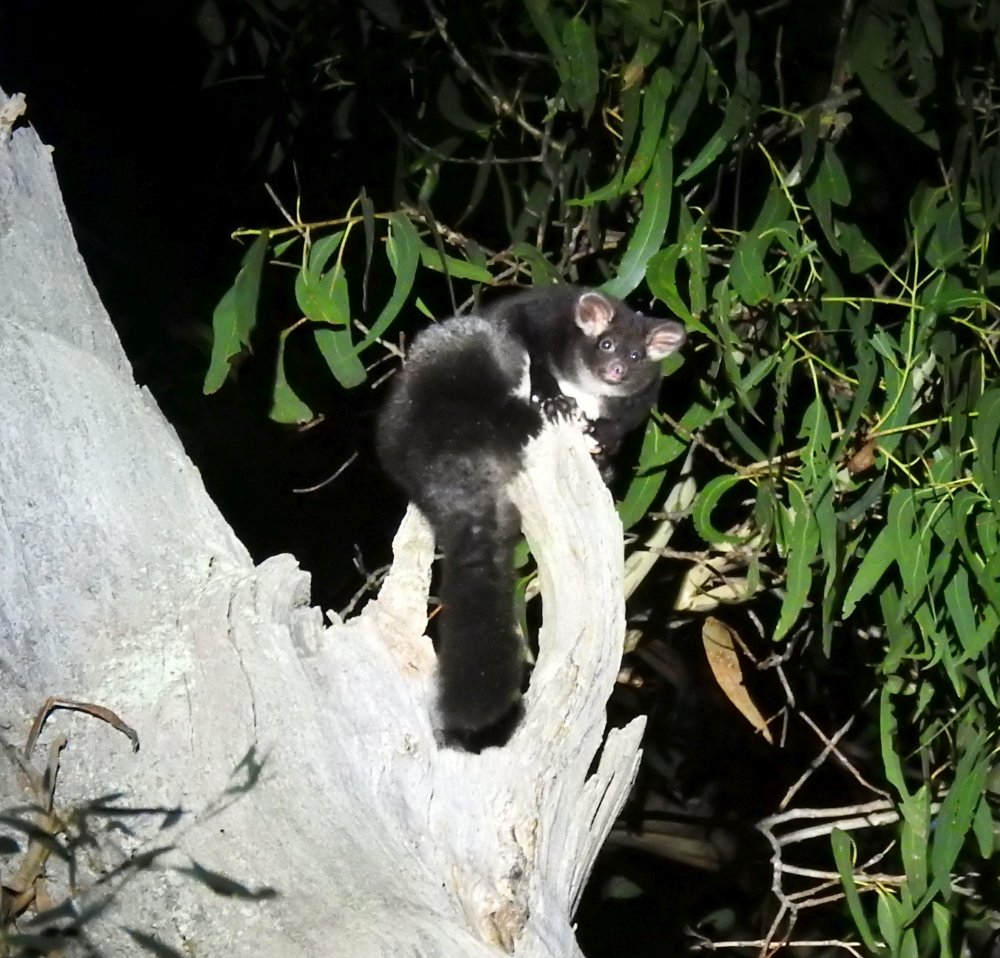
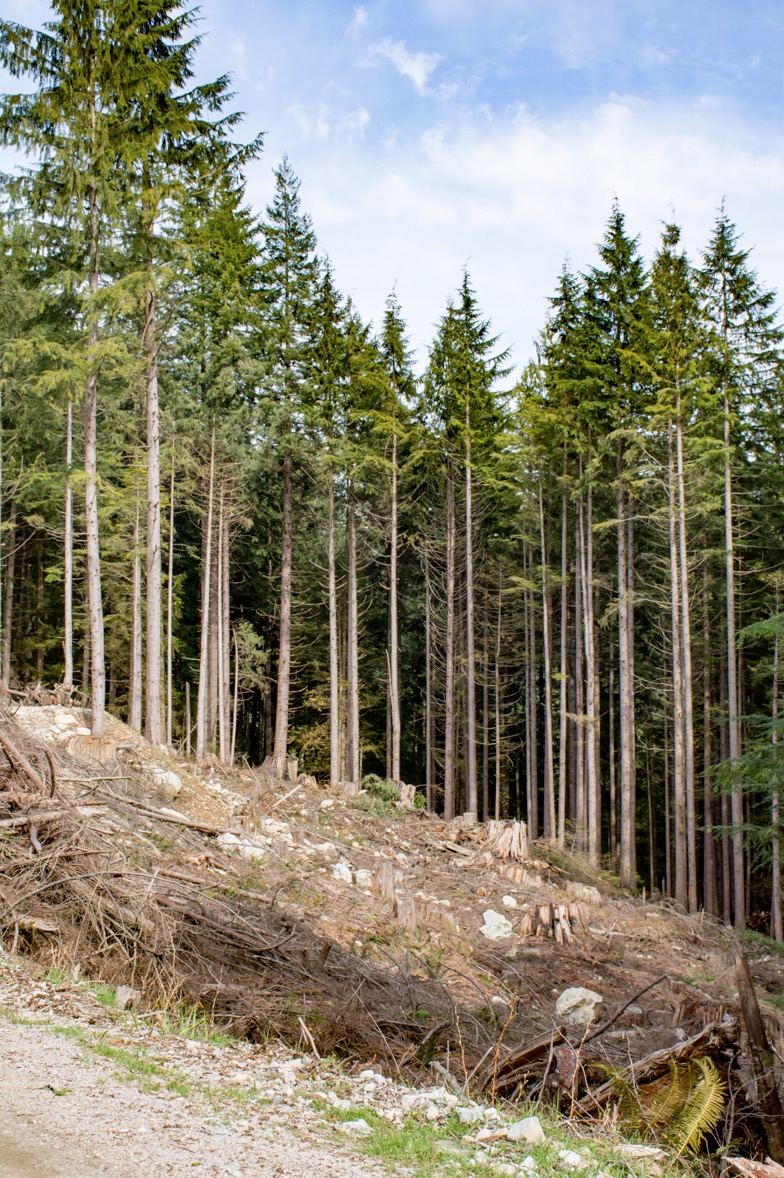 The occurrence and fate of microplastics in forest ecosystems is a recognized knowledge gap. In this paper, we used an aligned extraction method to quantify microplastics (>20 µm) in organic and mineral forest soil horizons and throughfall deposition. Calculation of forest soil microplastic stocks and throughfall fluxes allowed an estimation of throughfall contribution to microplastic accumulation in forest soils back to 1950. We identified a short-term microplastic enrichment in decomposed litter horizons followed by an accumulation in lower mineral soil caused by litter turnover processes. Similar microplastic features in soil and throughfall deposition indicate that microplastics entering forest soils primarily originate from atmospheric deposition and litter fall, while other sources have a minor impact. We conclude that forests are good indicators for atmospheric microplastic pollution and that high microplastic concentrations in forest soils indicate a high diffuse input of microplastics into these ecosystems.
The occurrence and fate of microplastics in forest ecosystems is a recognized knowledge gap. In this paper, we used an aligned extraction method to quantify microplastics (>20 µm) in organic and mineral forest soil horizons and throughfall deposition. Calculation of forest soil microplastic stocks and throughfall fluxes allowed an estimation of throughfall contribution to microplastic accumulation in forest soils back to 1950. We identified a short-term microplastic enrichment in decomposed litter horizons followed by an accumulation in lower mineral soil caused by litter turnover processes. Similar microplastic features in soil and throughfall deposition indicate that microplastics entering forest soils primarily originate from atmospheric deposition and litter fall, while other sources have a minor impact. We conclude that forests are good indicators for atmospheric microplastic pollution and that high microplastic concentrations in forest soils indicate a high diffuse input of microplastics into these ecosystems.